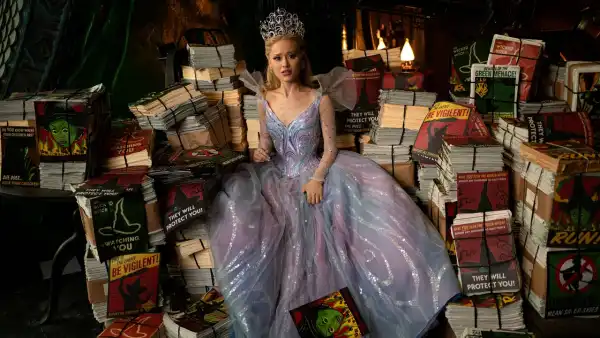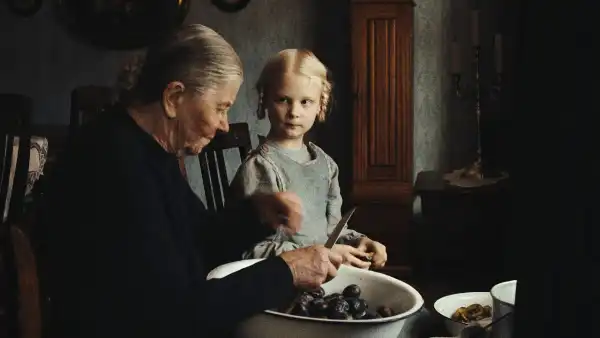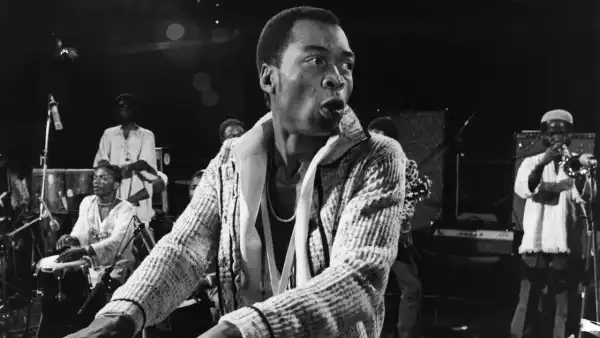
Save this storySave this storySave this storySave this storyYou’re perusing the Goings On newsletter, your guide to our weekly selections for viewing, hearing, and participating. Subscribe to have it delivered directly to your inbox.
The U.K.-based artist Dev Hynes stays in high demand. Hynes, as adept an artist-curator as he is a songwriter, has played in concert spaces alongside composer Philip Glass, crafted music for the stage (in the presentation of Max Wolf Friedlich’s nail-biter “Job”), composed for a handful of motion pictures (including Paul Schrader’s “Master Gardener” and Rebecca Hall’s “Passing”), and written or created for numerous gifted collaborators, on albums and linked artworks. Indeed, his agenda has been so occupied that he took a seven-year break from his defining endeavor, Blood Orange—where he takes on the roles of vocalist and producer—his lengthiest pause since he adopted the identity, in 2011.
 Photograph by Gareth McConnell for The New Yorker
Photograph by Gareth McConnell for The New Yorker
Finally, he made a comeback in August, with “Essex Honey,” a splendid and emotionally stirring album that makes the most of his extensive network, featuring the pop geniuses Lorde and Caroline Polachek, the alternative-folk artist Mustafa, and the cellist Mabe Fratti, among others. He channels all that dynamism into crafting reflective songs that aspire to the mind-clearing openness of expansive countryside. Blood Orange will perform at Brooklyn Steel, Nov. 29-30 and Dec. 2-5.—Sheldon Pearce

About Town
Art
In Charisse Pearlina Weston’s artistic constructions, glass panes are assembled into formations of closeness that skirt the edge of shared devastation. Politics and history simmer from the perilous meeting of their junctures. Within the precarious nature of Weston’s selected medium—and of its layout—she locates a symbol for Black existence, its delicate metaphysical facade, and the powers that sculpt it. The sculptures appear to be holding their breath, as the uncertain question of their future lingers: the mental picture of their shattering under pressure is readily called to mind, accentuated by regions in certain sculptures where glass has previously fractured and been reassembled.—Zoë Hopkins (Jack Shainman; through Dec. 20.)
Dance
New York City Ballet begins its season with “George Balanchine’s The Nutcracker.” For children, there’s the immense Christmas tree that expands to frightening dimensions. Even for the most nonchalant among us, there’s Tchaikovsky’s stimulating music, which weaves in well-known melodies (“Cadet Roussel”) and the twinkling sound of the celesta—an ideal parallel for the grace of Sugarplum’s pointe work. Ballet enthusiasts can debate whether this year’s Sugarplum, Marzipan Shepherdess, or Candy Cane lives up to the standard of the previous year’s. Balanchine’s “Nutcracker” consistently offers some small revelation, which explains its enduring appeal.—Marina Harss (David H. Koch Theatre; Nov. 28-Jan. 4.)
Movies.jpg)
Isabelle Corey in “Bob le Flambeur.”
Photograph from Alamy
A highlight from Film Forum’s “Le Heist Français” series is Jean-Pierre Melville’s 1956 film “Bob le Flambeur,” which discovers wistful romanticism within an intricate unlawful undertaking. Bob Montagné (Roger Duchesne), an urbane middle-aged gambler immersed in the Parisian criminal underbelly, forfeits all his wealth; desperate, he assembles a crew to plunder a casino, though the collaborative effort becomes hopelessly interwoven with romantic entanglements. After rescuing a young woman (Isabelle Corey) from an abusive pimp, Bob—conceding his age with poignant insight—sets her up with his impulsive protégé (Daniel Cauchy). A police inspector (Guy Decomble) whose life Bob rescued long ago, coupled with a croupier (Claude Cerval) who possesses a sharp-eyed wife (Colette Fleury) and a concealed history, embody a principled perspective on veiled loyalties and betrayals.—Richard Brody (Nov. 21-Dec. 4.)
Classical
Going back to 2012, the honored Iranian musician Kayhan Kalhor was seated on a detailed, patterned rug, delivering twelve minutes of stringed improvisation for NPR’s Tiny Desk series. The performance was enchanting, prompting a YouTube user to crown him “the Paganini of Kamancheh,” the stringed instrument indigenous to Iran. Following a Grammy victory nearly fifteen years later, Kalhor graces the stage at the Town Hall for a night of traditional Persian music. Joining him will be two fellow maestros, Kiya Tabassian, on setar, and Behrouz Jamali, on tombak. Paganini may have departed long ago, yet he unquestionably lives on in Kalhor, and currently, more than ever, allowing oneself to be spellbound by art offers a cherished experience.—Jane Bua (The Town Hall; Nov. 30.)
Broadway
Within “Chess”—the sonically stimulating disco-rock musical brought to you by ABBA’s songwriters Benny Andersson and Björn Ulvaeus, featuring lyrics collaboratively penned by Tim Rice—a worldwide love affair stands as a symbol for Cold War conflicts, disregarding narrative rationality. The script has remained under modification since 1986, and for this simplified production, directed by Michael Mayer, the playwright Danny Strong takes a humorous approach: the narrator, known as the Arbiter (portrayed by the captivating Bryce Pinkham), provides information while making cutting observations. Is it logical? Not particularly. Nonetheless, I surrendered ecstatically, overwhelmed by three Broadway titans: Aaron Tveit as the American rebel Freddie, Lea Michele as his chess assistant, Florence, and Nicholas Christopher as the Russian introvert Anatoly, whose astounding vocal range could demolish an entire Iron Curtain.—Helen Shaw (Imperial; open run.)
Indie Rock
There will likely still be turkey leftover in the refrigerator when Aimee Mann and Ted Leo present three Christmas performances at City Winery. Sometime around 2010, Mann and Leo, two well-regarded figures in indie music, organized a take on Mann’s holiday-themed variety performance, featuring friends—Liz Phair reportedly sang a unique song—and the tradition persists. Under the moniker the Both, they unite their witty, perceptive, and politically aware songwriting through finely layered harmonies—Leo’s inherent coolness perfectly complementing Mann’s spectacularly clear alto, in which notes are constantly shifting between somber and vibrant. They will be joined by the comedians Josh Gondelman and Paul F. Tompkins, along with the singer-songwriter Nellie McKay. Christmas has arrived, it seems, not a moment too late.—Ray Lipstein (Nov. 28-30.)
Off Broadway
In Ethan Lipton’s surrealist stage play “The Seat of Our Pants”—the composer’s musical interpretation of Thornton Wilder’s “The Skin of Our Teeth,” steered by Leigh Silverman—the Antrobus family endures countless millennia of disasters that, strangely, all unfold “now” in New Jersey: the Ice Age overwhelms the suburbs; the Atlantic City boardwalk succumbs to the great flood. The outstanding Micaela Diamond delivers humorous lines as the family’s bold maid, while Andy Grotelueschen portrays a Garrison Keillor-influenced announcer. Lipton’s clever, lighthearted take adds essential buoyancy to the 1942 play, excising the more ponderous sections to spotlight Wilder’s central point: even if the “end times” are upon us, that is simply the customary course of affairs for humanity.—H.S. (Public Theatre; through Dec. 7.)
R. & B.
The year 2025 proved to be a notable year for Dijon Duenas, the singer-songwriter and producer known mononymously as Dijon. Following his time during the mid-2010s within the alternative R. & B. duo Abhi//Dijon, the singer made his independent début with “Absolutely” in 2021, cultivating a flowing soul sound. Nevertheless, many listeners initially discovered him this past summer, by carefully reading the credits for “Swag,” Justin Bieber’s triumphant album. He then surfaced within Paul Thomas Anderson’s compelling political suspense film, “One Battle After Another,” this past fall. In the time between those appearances, Dijon presented his own viewpoint, with “Baby,” his finest album thus far. The record marks a significant advancement, playing with all traditional concepts of style, structure, and arrangement.—Sheldon Pearce (Brooklyn Paramount; Dec. 1-2. Terminal 5; Dec. 4.)
Movies
Within “Benita,” the documentary filmmaker Alan Berliner undertakes a deeply personal project imbued with sorrow and regret. In 2021, the New York-based filmmaker Benita Raphan passed away by suicide; Raphan’s family entrusted Berliner, an advisor for several of her films, with finalizing her latest, unfinished piece. Instead, Berliner, receiving entry to Raphan’s individual collection, created this forthright and affecting biographical portrayal. Her gift and originality were apparent in early years; following college, she embarked on making films, facing challenges regarding funding and recognition, as well as growing strain from mental illness. Berliner pays homage to a remarkable artist who, poignantly, achieves wider recognition via his memorial tribute.—R.B. (Firehouse Cinema; opens Nov. 28.)
Art
Ringl+pit’s “Glass and Paper,” from 1931.
Photograph by ringl+pit / Courtesy Robert Mann Gallery
Grete Stern and Ellen Auerbach were in their early twenties in 1930, as they inaugurated a studio in Berlin and initiated a partnership under the moniker ringl+pit. Their collection—monochrome portraits, still-lifes, and advertising images, with some showcased currently at Robert Mann gallery—challenges an education anchored in Bauhaus severity through playful, quirky Surrealism. Their forte involved sophistication imbued with a unique attitude, exemplified by a portrait of Auerbach (also known as pit) delivering viewers an astute sideways gaze from under a veil. An understated portrait of Bertolt Brecht stands out within a group that leans decidedly sensuous, encompassing a contorted, fleshy glove, dandelions suspended within a water-filled glass, and a woman’s hands submerged within a basin of sudsy water. Ringl+pit smoothed the avant-garde’s jagged edges, and appended their own distinctive sting.—Vince Aletti (Robert Mann; through Dec. 6.)

Local Gems
Cherished Yuletide customs.
 Illustration by Philip Lindeman
Illustration by Philip Lindeman
Each December, within Atlanta, for as long as memory serves, I’ve viewed “A Child’s Christmas in Wales” in company with my parents alongside my younger sibling. We are unmistakably not Welsh. Nevertheless, following my mother’s chance encounter with the 1987 TV movie, headlined by the British character actor Denholm Elliott, watching it transformed into an annual holiday tradition. Drawn from Dylan Thomas’s narrative poem of the same title, first published in 1952, the film tenderly and melancholically chronicles the boyhood Yuletide happenings of an elderly Welshman, gently and somewhat mischievously embodied by Elliott. Mustachioed firemen drench a smoky parlor, tipsy aunts sing quietly within the yard, with a “clockwork mouse” dashing underfoot. One specific line became a sort of inside joke in my family, signifying the fleeting nature of time: “I can never remember whether it snowed for six days and six nights when I was twelve, or whether it snowed for twelve days and twelve nights when I was six.”—Charles Bethea
About thirty-five years prior, an attorney, whose clientele included a leader within the Genovese crime enterprise, chose to commemorate his lymphoma’s remission with an over-the-top Christmas-light arrangement across his residence located in southwest Brooklyn. His neighbors also developed enthusiasm, and it remained. Visiting the Dyker Heights Christmas Lights will necessitate, for the majority, a commute on the D or R train, alongside a bus tour or a fifteen-minute stroll, enabling one to mentally ready themselves for a spectacular holiday display: energetic lines of animatronic nutcrackers, throngs of inflatable angels, snowmen reaching the heights of giraffes. One particular year, my daughter, then six and overwhelmed by sensory overload, guided both her brother and myself from a million-watt thoroughfare toward a quieter byway, where we were seated upon a short stone perimeter, staring at the dim evening sky, freshly appreciative of the darkness.—Jessica Winter
Personally, I favor quietly joining the stereo at a Yuletide gathering—the more reserved, and refined the better—engaging “Must Be Santa,” the most palpably unhinged selection extracted from Bob Dylan’s 2009 holiday record, “Christmas in the Heart,” then observing the length it takes before someone insists that I halt the selection. (Fair warning: I seldom reach the conclusion of the song.) On a marginally more earnest point, I furthermore discover that I am in the habit of reaching out to friends around Christmastime who have undergone the loss of individuals, whether just earlier within the ongoing year, or spanning multiple decades ago—the holidays are often an incredibly difficult stark reminder concerning time’s relentless march. There are scant condolences to extend toward individuals grieving, admittedly, though a squeeze of the hand, digital correspondence, a phone consultation, or a delivered postcard can be transformative. I remind myself to remain uninhibited regarding initiating dialogue on grief—after all, it’s probable that it’s presently sharing the same space.—Amanda Petrusich
My lineage includes Czech heritage on one side, alongside Italian heritage on the other. When it comes to holiday cuisine, the Italian heritage often comes out on top like a powerful gene. Each Christmas Eve, my parents, settled within Connecticut, commemorate the season utilizing immense dishes consisting of antipasto, requiring pounds of cured meats, aged provolone, fresh mozzarella, coupled with Sicilian olives organized into layered assemblies featuring lettuce alongside shaved fennel. For many years, those raw materials have been procured directly from Panino Italian Gourmet, an unassuming deli perched roadside alongside the highway situated in Brewster, New York. It’s a familial enterprise having started within Queens spanning fifty years; the original family elder presides over the register while her two sons take charge of the slicers. Conventionally, my younger brother combined with myself frequent Panino directly on December 23rd, carefully arranging the meat combined with cheese requisites, later supplementing sandwiches designated for the subsequent journey home. I advocate the Italian Flag, comprising mozzarella, roasted peppers, alongside broccoli rabe—however additionally introducing prosciutto. As Grandpa Alfonse would remark, bellissimo.—Kyle Chayka
Christmas within London initiates riskily promptly. Each year, resting centrally within the city’s financial area, an awe-inspiring tree lighting ritual comes to pass at one amongst London’s most established covered markets. Spanning back to the fourteenth century, Leadenhall Market is erected over the remnants of Roman Londinium. Throughout the Victorian epoch, it stood famously to purchase poultry, and quite likely stands where Scrooge took delivery of his turkey directly from “A Christmas Carol.” Currently, it hosts several bougie coffee emporiums combined with pubs that resonate among individuals donning blue collared shirts. As November arrives, a lively throng accumulates underneath the market’s iron arched structure, witnessing the towering tree come aglow. Mulled wine, simulated snowfall, coupled with a band that exudes considerable jazz finesse as to encourage one to nearly dismiss that Christmas stands as still further than a month’s journey distant.—Anna Russell
P.S. Notable internet gems:
- Hilary Duff delights in mahjong
- A genuine morning schedule
- Become engrossed by conversations
Sourse: newyorker.com






